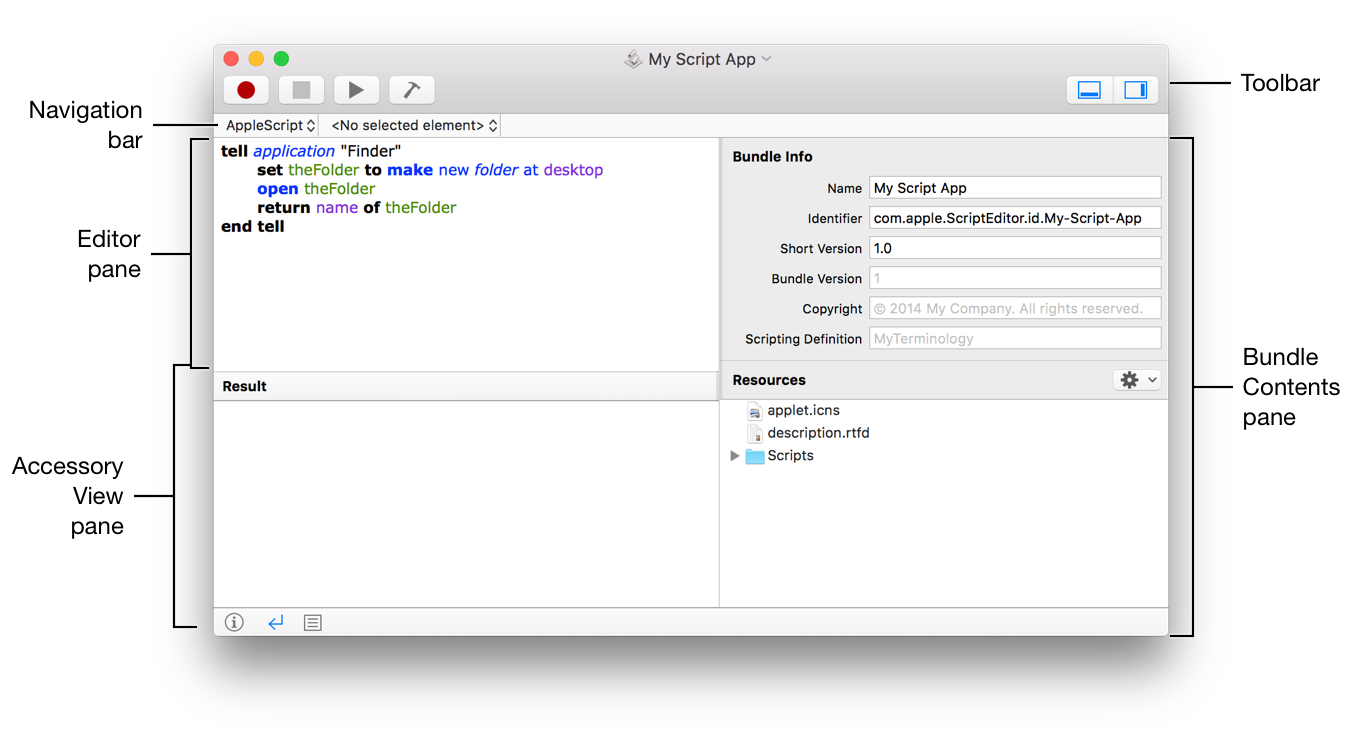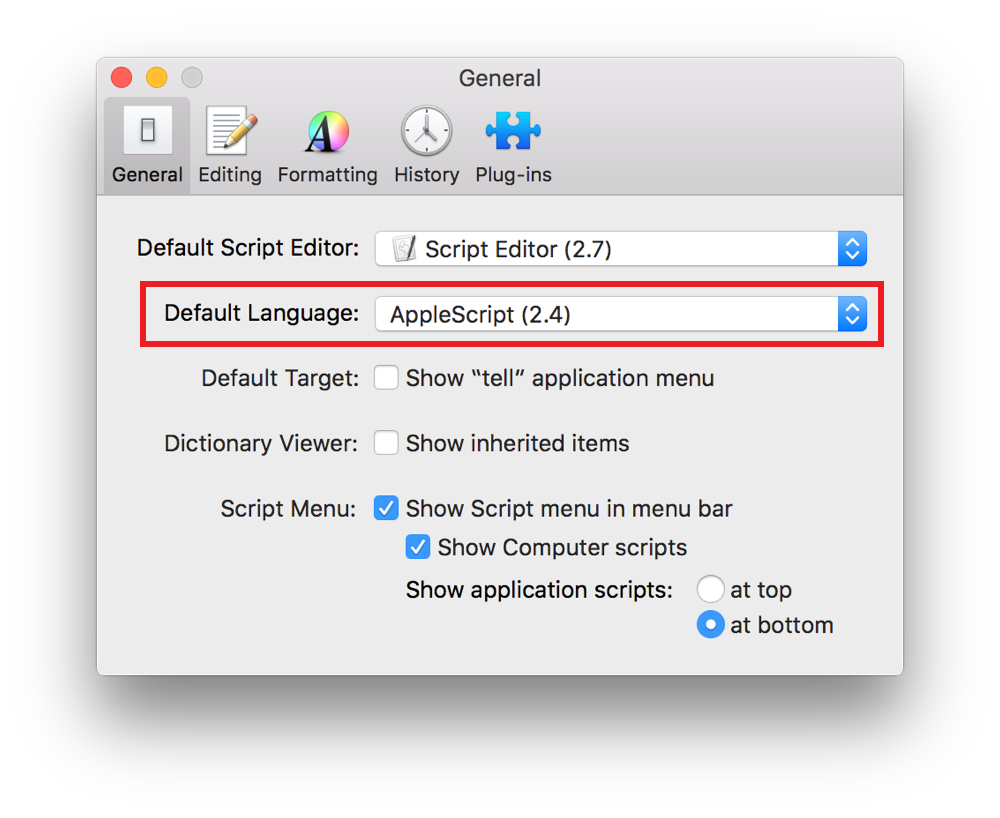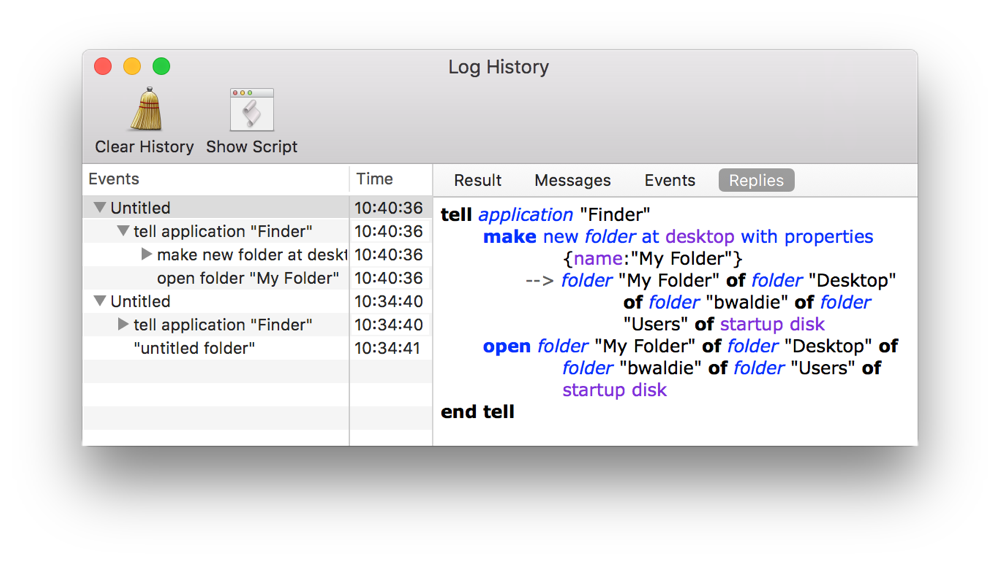Getting to Know Script Editor

Script Editor, found in /Applications/Utilities/, is an app for writing AppleScripts and JavaScripts. It provides the ability to edit, compile, and run scripts, browse scripting terminology, and save scripts in a variety of formats including compiled scripts, apps, and plain text.
Navigating Script Editor Documents
A Script Editor document window includes the following main areas, as shown in Figure 5-1:

Toolbar—Use this to compile, run, and stop your script. Buttons are also available for showing and hiding the accessory view pane and the bundle contents pane. Select View > Customize Toolbar, or Control-click on the toolbar and choose Customize Toolbar, to choose what buttons displayed in the toolbar.
The toolbar also includes a Record button, which converts manual mouse clicks and keystrokes into script code. However, recording is not supported in JavaScript and few apps support AppleScript recording.
Navigation bar—Use this bar to select a scripting language, target an app, or navigate through the handlers in your script.
The navigation bar currently only supports navigation of AppleScript handlers.
Editor pane—Write your script code here.
Accessory View pane—View and edit your script’s description here, or browse the result and events produced when your script runs.
Bundle Contents pane— Edit the identifier, version, and copyright info for your script here. You can also use this pane to add, remove, or manage resources contained within the bundle. This pane is accessible only when your script is saved in script bundle or app format.
Targeting a Scripting Language
When you create a Script Editor document, select a scripting language in the navigation bar. See Figure 5-2.

If you always use the same language, set it as the default in the General pane of Script Editor preferences. See Figure 5-3.

Viewing Script Events and Results
Script Editor can display the result of executing a script, as well as a log of events sent and received during execution.
Viewing the Script Result
The result of executing your script—if a result was produced—is found in the Accessory View pane. See Figure 5-4.

Do one of the following:
Press Command-2.
Choose View > Show Result.
Click the Show Result (
 ) button at the bottom of the Accessory View pane.
) button at the bottom of the Accessory View pane.
Viewing the Script Log
The Accessory View pane also contains a script log. See Figure 5-5.

The script log displays the following information.
Result—The result of executing your script.
Messages—Includes log messages generated as your script runs, as well as the script’s result.
Events—Includes log messages, the script’s result, and events—commands—sent to applications.
Replies—Includes log messages, the script’s result, events sent to applications, and event replies.
Do one of the following:
Press Command-3.
Choose View > Show Log.
Click the Show Log (
 ) button at the bottom of the Accessory View pane.
) button at the bottom of the Accessory View pane.
Viewing the Log History
The result and script log areas in the Accessory View pane reset each time you run your script. However, you can view historical logs for an opened script in the Log History window. See Figure 5-6.

Do one of the following:
Press Option-Command-L.
Choose View > Log History.
Click the Log History button (
 ) in the top right of the Accessory View pane.
) in the top right of the Accessory View pane.
Copyright © 2018 Apple Inc. All rights reserved. Terms of Use | Privacy Policy | Updated: 2016-06-13

